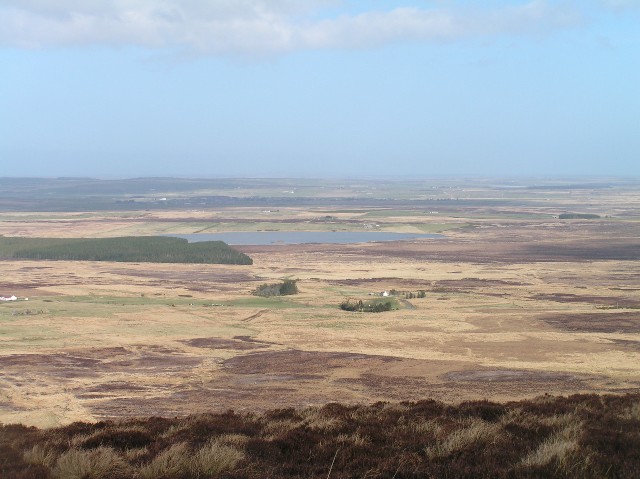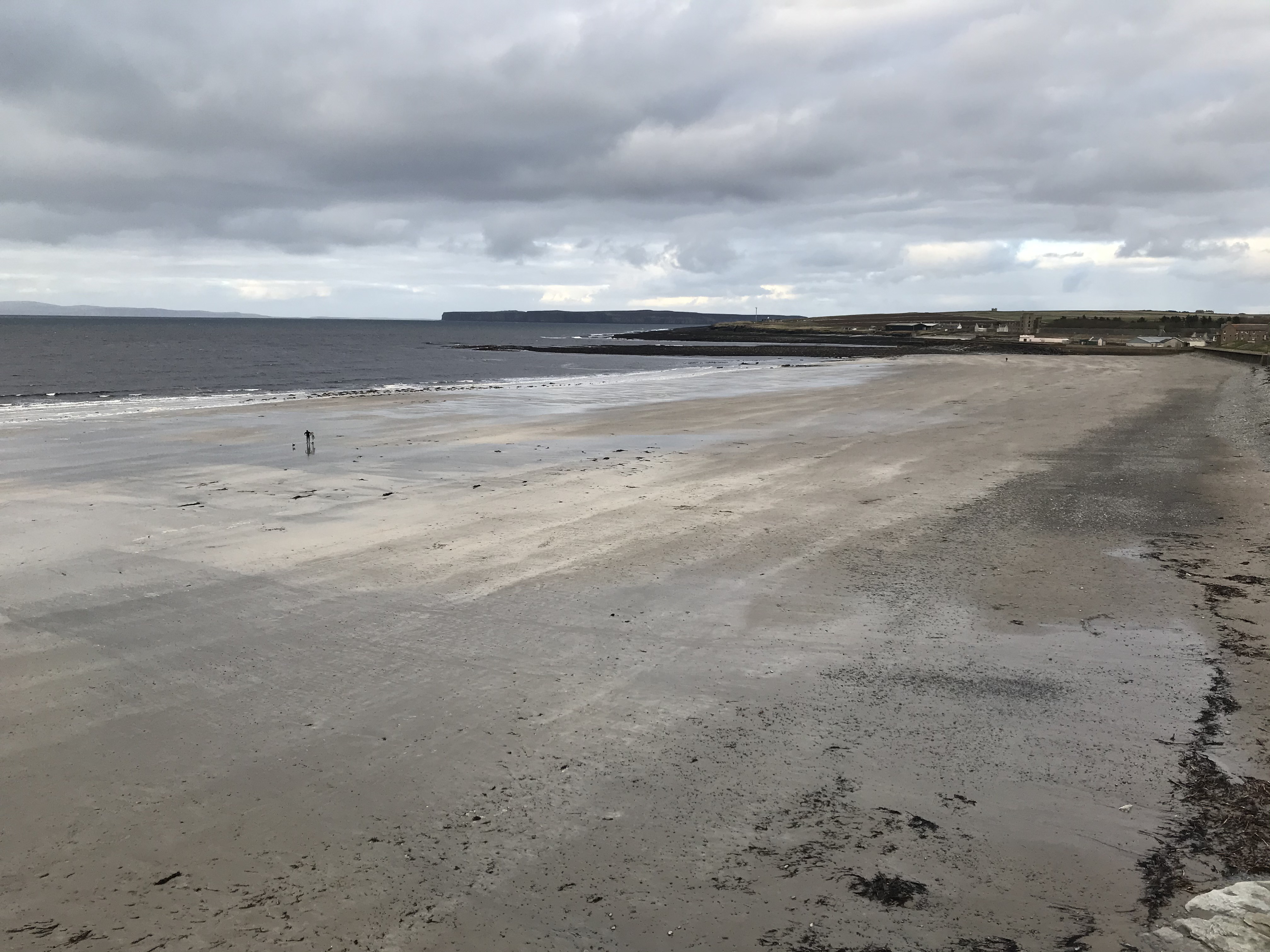|
Caithness Courier
North of Scotland Newspapers (NOSN) is the trade name under which Scottish Provincial Press publishes two weekly newspapers, the ''John O'Groat Journal'' and the ''Caithness Courier'', both serving the Caithness area in the Highland council area of Scotland. The two papers share one website. The ''Groat'' is normally published on Fridays, and the ''Courier'' on Wednesdays. The NOSN trade name has been in use since 1983, but the newspaper titles have histories stretching back into the 19th century. The ''Groat'' began as a Wick-centred paper, and the ''Courier'' as a Thurso-centred paper. Wick and Thurso were the only burghs in the former county of Caithness. The ''Groat'' has a circulation of around 7,200,and the ''Courier'' around 5,700. See also *Newspapers of Scotland This is a list of newspapers in Scotland. Daily newspapers : Traditionally newspapers could be divided into 'quality', serious-minded newspapers (usually referred to as 'broadsheets' due to their large size) ... [...More Info...] [...Related Items...] OR: [Wikipedia] [Google] [Baidu] |
Scottish Provincial Press
Scottish usually refers to something of, from, or related to Scotland, including: *Scottish Gaelic, a Celtic Goidelic language of the Indo-European language family native to Scotland *Scottish English * Scottish national identity, the Scottish identity and common culture *Scottish people, a nation and ethnic group native to Scotland *Scots language, a West Germanic language spoken in lowland Scotland *Symphony No. 3 (Mendelssohn) The Symphony No. 3 in A minor, Op. 56, known as the ''Scottish'', is a symphony by Felix Mendelssohn, composed between 1829 and 1842. History Composition Mendelssohn was initially inspired to compose this symphony during his first visit to Brit ..., a symphony by Felix Mendelssohn known as ''the Scottish'' See also * Scotch (other) * Scotland (other) * Scots (other) * Scottian (other) * Schottische * {{disambiguation Language and nationality disambiguation pages ca:Escocès ... [...More Info...] [...Related Items...] OR: [Wikipedia] [Google] [Baidu] |
Newspaper
A newspaper is a periodical publication containing written information about current events and is often typed in black ink with a white or gray background. Newspapers can cover a wide variety of fields such as politics, business, sports and art, and often include materials such as opinion columns, weather forecasts, reviews of local services, obituaries, birth notices, crosswords, editorial cartoons, comic strips, and advice columns. Most newspapers are businesses, and they pay their expenses with a mixture of subscription revenue, newsstand sales, and advertising revenue. The journalism organizations that publish newspapers are themselves often metonymically called newspapers. Newspapers have traditionally been published in print (usually on cheap, low-grade paper called newsprint). However, today most newspapers are also published on websites as online newspapers, and some have even abandoned their print versions entirely. Newspapers developed in the 17th century ... [...More Info...] [...Related Items...] OR: [Wikipedia] [Google] [Baidu] |
Caithness
Caithness ( gd, Gallaibh ; sco, Caitnes; non, Katanes) is a historic county, registration county and lieutenancy area of Scotland. Caithness has a land boundary with the historic county of Sutherland to the west and is otherwise bounded by sea. The land boundary follows a watershed and is crossed by two roads (the A9 and the A836) and by one railway (the Far North Line). Across the Pentland Firth, ferries link Caithness with Orkney, and Caithness also has an airport at Wick. The Pentland Firth island of Stroma is within Caithness. The name was also used for the earldom of Caithness ( 1334 onwards) and for the Caithness constituency of the Parliament of the United Kingdom (1708 to 1918). Boundaries are not identical in all contexts, but the Caithness area lies entirely within the Highland council area. Toponymy The ''Caith'' element of the name ''Caithness'' comes from the name of a Pictish tribe known as the ''Cat'' or ''Catt'' people, or ''Catti'' (see Kingdom of Ca ... [...More Info...] [...Related Items...] OR: [Wikipedia] [Google] [Baidu] |
Highland (council Area)
Highland ( gd, A' Ghàidhealtachd, ; sco, Hieland) is a council area in the Scottish Highlands and is the largest local government area in the United Kingdom. It was the 7th most populous council area in Scotland at the 2011 census. It shares borders with the council areas of Aberdeenshire, Argyll and Bute, Moray and Perth and Kinross. Their councils, and those of Angus and Stirling, also have areas of the Scottish Highlands within their administrative boundaries. The Highland area covers most of the mainland and inner-Hebridean parts of the historic counties of Inverness-shire and Ross and Cromarty, all of Caithness, Nairnshire and Sutherland and small parts of Argyll and Moray. Despite its name, the area does not cover the entire Scottish Highlands. Name Unlike the other council areas of Scotland, the name ''Highland'' is often not used as a proper noun. The council's website only sometimes refers to the area as being ''Highland'', and other times as being ''the Hig ... [...More Info...] [...Related Items...] OR: [Wikipedia] [Google] [Baidu] |
Council Areas Of Scotland
For local government purposes, Scotland is divided into 32 areas designated as "council areas" ( gd, comhairlean), which are all governed by single-tier authorities designated as "councils". They have the option under the Local Government (Gaelic Names) (Scotland) Act 1997 of being known (but not re-designated) as a "''comhairle''" when opting for a Gaelic name; only ''Comhairle nan Eilean Siar'' (Council of the Western Isles) has chosen this option, whereas the Highland Council (''Comhairle na Gàidhealtachd'') has adopted its Gaelic form alongside its English equivalent informally. The council areas have been in existence since 1 April 1996, under the provisions of the Local Government etc. (Scotland) Act 1994. Historically, Scotland was divided into 34 counties or shires. Although these no longer have any administrative function, they are still used to some extent in Scotland for cultural and geographical purposes, and some of the current council areas are named after the ... [...More Info...] [...Related Items...] OR: [Wikipedia] [Google] [Baidu] |
Scotland
Scotland (, ) is a country that is part of the United Kingdom. Covering the northern third of the island of Great Britain, mainland Scotland has a border with England to the southeast and is otherwise surrounded by the Atlantic Ocean to the north and west, the North Sea to the northeast and east, and the Irish Sea to the south. It also contains more than 790 islands, principally in the archipelagos of the Hebrides and the Northern Isles. Most of the population, including the capital Edinburgh, is concentrated in the Central Belt—the plain between the Scottish Highlands and the Southern Uplands—in the Scottish Lowlands. Scotland is divided into 32 administrative subdivisions or local authorities, known as council areas. Glasgow City is the largest council area in terms of population, with Highland being the largest in terms of area. Limited self-governing power, covering matters such as education, social services and roads and transportation, is devolved from the Scott ... [...More Info...] [...Related Items...] OR: [Wikipedia] [Google] [Baidu] |
Wick, Caithness
Wick ( gd, Inbhir Ùige (IPA:[ˈinivɪɾʲˈuːkʲə]), sco, Week) is a town and royal burgh in Caithness, in the far north of Scotland. The town straddles the River Wick and extends along both sides of Wick Bay. "Wick Locality" had a population of 6,954 at the time of the United Kingdom Census 2011, 2011 census, a decrease of 3.8% from 2001. Pulteneytown, which was developed on the south side of the river by the British Fisheries Society during the 19th century, was officially merged into the burgh in 1902. Elzy was described as on the coast a couple of miles east of Wick in 1836. The town is on the main road (the A99 road (Great Britain), A99–A9 road (Great Britain), A9 road) linking John o' Groats with southern Great Britain, Britain. The Far North Line, Far North railway line links Wick railway station with southern Scotland and with Thurso, the other burgh of Caithness. Wick Airport is on Wick's northern outskirts. The airport has two usable runways. A third is derelict. ... [...More Info...] [...Related Items...] OR: [Wikipedia] [Google] [Baidu] |
Thurso
Thurso (pronounced ; sco, Thursa, gd, Inbhir Theòrsa ) is a town and former burgh on the north coast of the Highland council area of Scotland. Situated in the historical County of Caithness, it is the northernmost town on the island of Great Britain. From a latitudal standpoint, Thurso is located further north than the southernmost point of Norway and in addition lies more than north of London. It lies at the junction of the north–south A9 road and the west–east A836 road, connected to Bridge of Forss in the west and Castletown in the east. The River Thurso flows through the town and into Thurso Bay and the Pentland Firth. The river estuary serves as a small harbour. At the 2011 Census, Thurso had a population of 7,933. The larger Thurso civil parish including the town and the surrounding countryside had a population of 9,112. Thurso functioned as an important Norse port, and later traded with ports throughout northern Europe until the 19th century. A thriving fish ... [...More Info...] [...Related Items...] OR: [Wikipedia] [Google] [Baidu] |
Burgh
A burgh is an autonomous municipal corporation in Scotland and Northern England, usually a city, town, or toun in Scots. This type of administrative division existed from the 12th century, when King David I created the first royal burghs. Burgh status was broadly analogous to borough status, found in the rest of the United Kingdom. Following local government reorganisation in 1975, the title of "royal burgh" remains in use in many towns, but now has little more than ceremonial value. History The first burgh was Berwick. By 1130, David I (r. 1124–53) had established other burghs including Edinburgh, Stirling, Dunfermline, Haddington, Perth, Dumfries, Jedburgh, Montrose and Lanark. Most of the burghs granted charters in his reign probably already existed as settlements. Charters were copied almost verbatim from those used in England, and early burgesses usually invited English and Flemish settlers.A. MacQuarrie, ''Medieval Scotland: Kinship and Nation'' (Thrupp: Sutton, 2 ... [...More Info...] [...Related Items...] OR: [Wikipedia] [Google] [Baidu] |
Counties Of Scotland
The shires of Scotland ( gd, Siorrachdan na h-Alba), or counties of Scotland, are historic subdivisions of Scotland established in the Middle Ages and used as administrative divisions until 1975. Originally established for judicial purposes (being the territory over which a sheriff had jurisdiction), from the 17th century they started to be used for local administration purposes as well. The areas used for judicial functions (sheriffdoms) came to diverge from the shires, which ceased to be used for local government purposes after 1975 under the Local Government (Scotland) Act 1973. Today, local government in Scotland is based upon council areas, which sometimes incorporate county names, but frequently have vastly different boundaries. Counties continue to be used for land registration, and form the basis of the lieutenancy areas (although the latter are not entirely identical). History Sheriffdoms or shires Malcolm III (reigned 1058 to 1093) appears to have introduced sheri ... [...More Info...] [...Related Items...] OR: [Wikipedia] [Google] [Baidu] |
Newspapers Of Scotland
This is a list of newspapers in Scotland. Daily newspapers : Traditionally newspapers could be divided into 'quality', serious-minded newspapers (usually referred to as 'broadsheets' due to their large size) and 'tabloids', or less serious newspapers. However, these definitions no longer apply, as several 'quality' papers in Scotland have followed the lead of ''The Independent'' by adopting a tabloid format (which some prefer to refer to as 'compact' to avoid being associated with their more downmarket peers). In Scotland, two broadsheet newspapers have made the switch to 'compact' format. ''The Scotsman'' did so in August 2004, and the ''Sunday Herald'' followed in November 2005. In addition to newspapers published in Scotland, including Scottish editions of United Kingdom newspapers, a number of local newspapers published in other parts of the British Isles are widely available. Sunday newspapers : Local weekly newspapers Aberdeen ---- * ''Aberdeen Citizen'' Aberdeenshire - ... [...More Info...] [...Related Items...] OR: [Wikipedia] [Google] [Baidu] |







